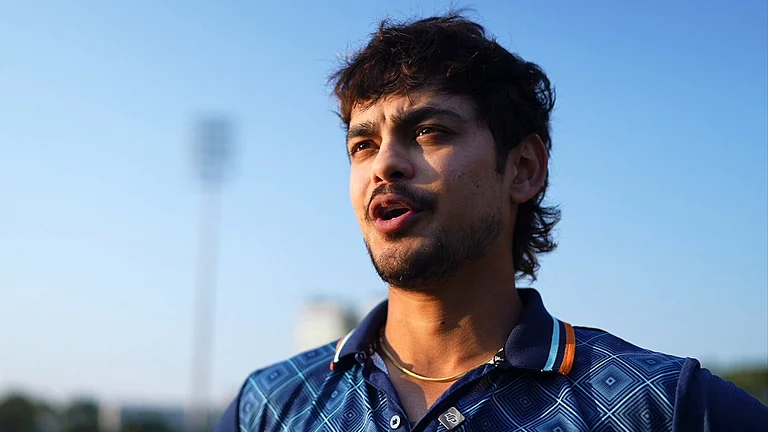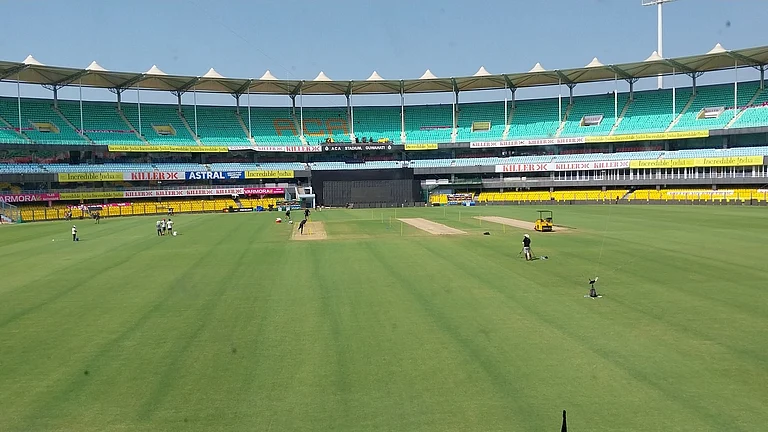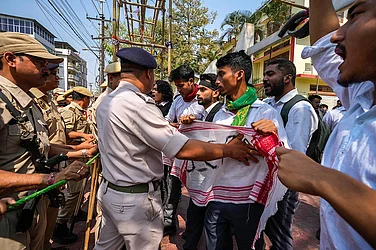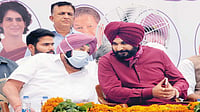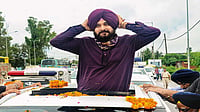All exit polls were unanimously predicting the return of Arvind Kejriwal’s AAP to power in Delhi. And Sudhir Chaudhary, editor-in-chief of Zee News, was having a public meltdown. “If Pakistan PM Imran Khan had decided to contest the Delhi polls with the promise of freebies,” Chaudhary said in a tone of high moral injury, “the average Delhiite would have voted for the Pakistan Tehreek-e-Insaf”. A few days later, when the exit poll predictions proved right, Chaudhary repeated the slur and claimed the Delhi voter cared more about free electricity, water and bus rides than the integrity of India.
This scene has played and replayed itself a countless number of times in our public lives in recent years. These have been dramatic and fateful times for media. Once it carried a humbler self-image: that of a mere messenger who does not mould the message itself, a neutral conduit of news. Just the free enactment of that function was to earn it the grand descriptor of ‘the fourth pillar of democracy’. Now it entertains a more aggrandised view of itself. It is by itself a form of power. It freely takes sides, like satraps aligning or breaking with rising or waning empires. Partisanship is not new, but the method used to be ‘show, don’t tell’. Now, across the spectrum, from Arnab Goswami to Ravish Kumar, it’s all tell, tell, tell. A monodrama filled with soliloquies.
This goes beyond, and deeper than, the specific context that has moulded it: extremely polarising politics and a regime that elicits the most primal fears and also the severest denunciations. Nine months ago, when Narendra Modi returned to power at the Centre, several journalists and some media organisations critical of him had reacted with an almost similar disgust as Chaudhary’s. The anger against opposition parties and Rahul Gandhi for their failure to unseat Modi was palpable. Many who had been at the receiving end of rape and death threats from BJP supporters over the preceding five years because of their criticism of Modi gave out a long list of, as senior journalist Harish Khare wrote in his column for The Hindu, the “frightening takeaways” of the Lok Sabha results.

Deepak Chaurasia and Sudhir Chaudhary collaborate to take on the Shaheen Bagh protest.
The difference between Chaudhary or other tribesmen inhabiting this unabashedly right-leaning media space and those critical of Modi, Amit Shah and the BJP is a simple one. The former believes Modi is India and any criticism of the PM or his lieutenant is an act of high treason. The latter argues the exact opposite: that Modi is systematically demolishing our democratic edifice and calling out his failures is paramount to preserving the idea of India. And so, for media discourse, we get an endless stream of cardboard arrows flying at each other, a la Ramanand Sagar’s television Ramayan. Except, a lot of arrows are actually poison-tipped. Fake news is, after all, a real thing. It could go from a naive credulity about chip-embedded Rs 2,000 notes, to landing a student in serious trouble with the law on account of wilfully misheard slogans—or, by mass-disseminating images that make another look like he’s carrying a stone, not a wallet. It’s so bad that fact-checking has become a bustling ancillary industry.
So what does the lay news consumer do? The media’s evacuation of the very claim to truth-telling—and truth is universal, not partial—is deeply problematic. Your truth now depends on the channel, newspaper, magazine or website you access. And journalism is not laid out on the back of facts as of old; it flows down from on high, like Jesus’ sermon on the mount, or like a flame-throwing Grand Inquisitor who was burning heretics in medieval Spain? In his long-winding monologues that seem to rely more on satire or poetry, Magsaysay awardee Ravish Kumar routinely berates the Modi government for any decision it may take. The very same decision would, of course, be instantly dubbed a ‘masterstroke’ by an Arnab Goswami or a Navika Kumar. The militant panel discussions on Republic TV, Aaj Tak or News Nation see anchors routinely taking swipes at journalists on the other end of this divide, while they maul panelists who disagree with their editorial line. The ambivalent reader/viewer is left bemusedly bobbing her head this side and that, like someone watching a tense Wimbledon tie-breaker.
Somewhere in the middle of this widening schism hangs a string of questions. Why has the Indian news media become so polarised, and what does it betoken for the journalistic method itself? Are the reins of the newsroom now in the hands of political masters or are editors self-regulating reports to escape the whip? What happens to truth-telling when you are seen as fundamentally partisan—even in these dire times? Should journalists, instead of demonising those who do not agree with their viewpoint, not be introspecting about whether they are losing out on the very raison d’etre of public discourse—to persuade, and be persuaded? Will it not be too fatal to abandon methodical objectivity—the basic tenet of fair journalism? Even if you are of the sort that believes there can be no neutrality in such times, what would be the point if you only preach to the choir? Was this churning long in the making and has it now only reached the final lap of an ugly chrysalis?
R. Rajagopal, editor of Calcutta-based newspaper The Telegraph believes the “imperceptible transformation” began over three decades ago when “editors of some of the legacy newspapers were turned into endangered species”. He tells Outlook that the “ground was already prepared with cricket leaping to front pages from sport pages and showbiz hogging the limelight in mainstream media. Jingoistic cricketing rivalry with Pakistan ensured a pop-patriotic appeal that allowed the audience to give vent to their vile opinion about ‘the Other’ couched in sports terminology…we killed off the checks and balances that would have prevented the rise of the majoritarian monolith that is now threatening to rip our country apart. Newspapers became cheerleaders of mass hysteria.”
ALSO READ: Lutyens Media? What’s That?
The advent of television news channels in the mid-1990s and the subsequent TRP wars unleashed, in due course, an insatiable greed to grab eyeballs. Two decades ago, it was ‘Ganesh idols drinking milk’ that triggered mass hysteria with gullible news consumers queuing up at Ganesh temples. Today it’s unvarnished xenophobia that seeks to create enemies within by othering anyone who disagrees. No wonder then that the past decade has witnessed not just an erosion of public faith in the media, but created polarities within the journalistic fraternity too. Ravish Kumar at NDTV is compelled to call out “Godi Media” for parroting the BJP’s line on all issues; independent journalist Swati Chaturvedi prefers the moniker “panna pramukhs”. Across the net, Sudhir Chaudhary at Zee News or Arnab Goswami at Republic TV freely dispense slurs like “presstitute” and “libtard” for the saffron-agnostic. And then there’s the “Lutyens media”: the journalist-elite of New Delhi, with seemingly near-perennial access to power circles, who despise Modi’s meteoric rise from mofussil shakha politics to the PMO. They are loath to consider that the Modi phenomenon may be the result of gaps left behind in the Nehruvian consensus. (A curious ghar wapasi happened there recently: Tavleen Singh was one of the loudest Modi propagandists till her son, author Aatish Taseer, was stripped of his Overseas Citizen status. She has lately given her reasons for switching sides in an interview to Karan Thapar, another card-holding member of the club.)

Ravish Kumar positions himself as a counterpoint to ‘post-journalism TV’.
Meanwhile, the World Press Freedom Index (WPFI) shows India slipping for the fourth consecutive year; pegged at an abysmally poor 140 out of 180 countries surveyed in 2019. The WPFI report gels with the view that the media has been increasingly hostage to power in recent years—a quantificatory version of the common experience that several TV news channels and even newspapers cutting across linguistic barriers sound like shrill BJP mouthpieces. But then, that conclusion also begs other questions—did the media behave differently when the Congress was in power? From centrist channels like the NDTV, to so many others? Did The Telegraph or The Hindu stay as unremitting in their oppositionality to, say, the Mamata Banerjee government in Bengal or the AIADMK/DMK duopoly in Tamil Nadu? Would journalists like Ravish Kumar, Arfa Khanum Sherwani, Abhisar Sharma and Rana Ayyub remain as acerbic—more importantly, often even personal—in their criticism of others in the future? Would digital platforms like Wire, courageous when cornered, also be courageous in introspection when free and unfettered? Forged anew in the heat of an Us/Them politics, is the media forsaking the very ground of universality it should aspire to? Ask this question of Outlook too.
There’s certainly the question of chumminess with previous regimes. Deepak Chaurasia, consulting editor with Hindi channel News Nation who was recently heckled at Shaheen Bagh for his unabashed pro-Modi stand, tells Outlook that “neutrality in the media is a myth”. “I know several journalists who lost their jobs or were refused access to ministries et al because they criticised Sonia Gandhi or other Congress leaders…why were questions of media polarisation not raised then?” Chaurasia asks.
Abhisar Sharma, who walked out of ABP News in September 2018 after he was reportedly asked by the channel’s management to not criticise Modi, agrees that all political parties tried to censor the media to varying degrees, but says the “extent of censorship today is unprecedented.” During his stint at Aaj Tak, when the UPA government was in power, Sharma recalls: “Salman Khurshid (then a Union minister) was addressing a press conference on an embezzlement case linked to his NGO. I stood up and told him he should resign.” Sharma says he was never asked to tone down criticism of the government till Modi came to power in 2014. “Today, a show or even a tweet against the government invites the wrath of the system and you lose your job,” he says.
ALSO READ: How Many Acres Of Print Does A Baron Need?
Sharma cites the example of independent journalist Rohini Singh. “During the UPA days, Rohini had done stories exposing various shady deals in which Robert Vadra was involved. Many senior BJP leaders at the time personally congratulated her for the stories. After Modi came to power, Rohini did a story exposing the financial rise of Jay Shah (Amit Shah’s son) and her life has been made miserable ever since,” he says. The story on Jay Shah was published by Wire, immediately inviting a criminal defamation suit in a Gujarat court by the present Union home minister’s son.

Veteran journalist Sevanti Ninan, who founded media watchdog website TheHoot, believes the present state of affairs can largely be blamed on the faulty revenue model of traditional media organisations. “A significant chunk of revenues for newspapers and even TV news channels comes in the form of government advertising. This makes organisations pliable: an antagonised government can ban you from their advertising plan…that fear makes media houses too scared to do their job freely,” says Ninan.
The past few years have also seen a burst of digital news platforms which have broken away from the trap of government advertisements and sponsorships. Websites like Wire, Scroll and Quint have dived into a new revenue matrix that relies on philanthropists, venture capitalists and crowd-funding. However, the taint of bias hasn’t escaped this still evolving segment. They may be vastly different in their natural political orientation, but the other side sees them as one blob: “anti-national”, “pro-Pakistan”, “jehadi”, “Vatican stooges”, “liberal-left/far left”. An anomalous compounding of charges that one bhakt, usefully, abbreviated as ‘Chrislamocommie’!
Arfa Khanum Sherwani, senior editor at Wire, tells Outlook that an important distinction needs to be made by those seeking to call out the polarities in Indian media. “The job of a journalist is to report on facts, without fear or favour, and whenever necessary take a stand to uphold democratic traditions and constitutional principles on which our country is founded,” she says. To her, labels like anti-Modi or pro-Congress are convenient means adopted by political parties to single out journalists who ask inconvenient questions. On Twitter, Sherwani has often been called “jehadi, Pakistani or Congressi dalal”, partly because of her name, partly owing to her activism and journalistic work that has repeatedly called out the BJP’s divisive politics. Sherwani says “today a simple Google search will show a journalist’s consistency in reporting objectively or with a bias…. I worked with Rajya Sabha TV, a government-funded entity, when the UPA was in power. I had been as critical of the Congress government back then as I am today of the BJP.”
Sherwani, however, agrees that the lack of objectivity in Indian media today is more worrying than ever. “Between 2014 and 2019, you had, as Ravish Kumar said, a godi media that refused to question the government, but after the 2019 Lok Sabha polls, we have a goli maaro media that has become an active party to the BJP’s narrative of hate against dissenters.”

Indeed, demonising the dissenter who questions the BJP, more so if she is a Muslim, has become a matter of competition among media organisations that believe the saffronists and Modi can do no wrong. Arnab Goswami repeatedly calls former/present JNU student leaders like Kanhaiya Kumar, Umar Khalid, Shehla Rashid or Aishe Ghosh “terrorists”. The distinction of coining monikers like “tukde tukde gang” and “Afzal premi gang” lies with Sudhir Chaudhary. Chaudhary’s past journalistic record also includes incarceration at Tihar Jail for his caught-on-tape attempt at extorting money from former Congress MP Naveen Jindal and running a fake sting operation that nearly got a lady government school teacher lynched because Chaudhary accused her of forcing girl students into prostitution. Anjana Om Kashyap, Shweta Singh and Rohit Sardhana at Aaj Tak and Amish Devgan of News18 India routinely indulge in Muslim-bashing, while showcasing a deferential surrender to anything Modi’s BJP does. And then there is Navika Kumar of Times Now who froths and fumes each time someone is critical of the BJP, but loses her interrogating prowess whenever given the rare chance to interview Modi or Amit Shah.
At the peak of the Delhi assembly poll campaign, Chaurasia and Chaudhary scripted a never-seen collaboration in Indian television news history when their channels joined hands to take on Shaheen Bagh. The news reports, jointly anchored by the duo for their respective channels, claimed the protestors were trying to break India—a charge straight out of the BJP’s handbook. Chaurasia justifies his vitriol thus: “I’m a nationalist and it’s my responsibility to condemn people who feel their right to free speech allows them to openly say ‘Bharat tere tukde honge, inshallah’, but the same right doesn’t allow me to question them”. Chaudhary too calls himself a “proud nationalist” and, while rejecting the charge of being pro-BJP, maintains “Zee News is a nationalistic channel which supports any force that puts India first”. Chaurasia goes a step further to say “I don’t want an audience that does not believe in our nationalistic approach”.
If one thought newspapers and news magazines are any different in their treatment of news, think again. While Calcutta’s The Telegraph may run screaming headlines against Modi on a daily basis, it is often criticised for going soft on Bengal CM Mamata Banerjee who, like Modi, is famous for her high-handedness, distaste for dissent and patronising of violence and hooliganism by party cadres. Rajagopal concedes an “impression has gained ground” that The Telegraph is soft on Mamata, but argues “events beyond our control, but steered by the Modi government, are deciding the coverage”. But taking a newspaper’s editorial stand from the anodyne edit/oped pages to the front page could be risky. Banner headlines don’t offer a lot of scope for nuance and complexity. And an issue like CAA/NRC can evoke a multiplicity of responses even within Bengal, not to speak of Bengal vis-a-vis Assam.
Sevanti Ninan believes a major problem with newspapers in general is the shift in emphasis from in-depth field reportage to gauging public sentiment by trends on social media and then deciding on an editorial line by that benchmark. “So if there’s a contentious issue, the first instinct has become to see how Twitter reacts. Given the penetration the ruling party has on social media platforms, it’s easy for them to manufacture public opinion on political issues or to even generate fake news,” she tells Outlook.
Independent journalist Rana Ayyub believes the reason media houses try to massage the collective ego of the government is the premium editors now place on “access journalism”. Ayyub adds, “Today, you do one story against the government and your access to ministries or ministers is cut off. Without this access, journalists find themselves unable to deliver stories. To maintain access, journalists and editors go overboard to keep BJP leaders happy. Many flaunt this access by posting selfies with political leaders. No wonder, most good journalists today are either without a job or are writing for foreign publications.”
On either side of this divide, journalists have found a justification for what they do—even if it doesn’t appeal to everyone. But what happened to the good old journalistic idiom of “always listen to all sides”? Ayyub says journalists today have a much larger responsibility, one that most in the trade have abdicated. “We are living in dark times when ministers and law enforcers make polarising statements. The fine line between objectivity and moral clarity is blurring. This is not the time for journalists to be objective or neutral, but to show moral clarity,” she tells Outlook.
That has one clear pitfall though—moral clarity in itself often stems from personal ideals, while traditional journalistic values preach primacy of facts. Outlook has twice carried cover stories predicting an electoral defeat for Modi—once in the run-up to the 2014 general elections, and once 12 years earlier, before the Gujarat assembly polls of 2002, just months after the riots. Now, we could insist we did not lack in moral clarity, but both times we were at a very safe distance from reality. Today, bias is even more of a badge, and the media is itself the story. Arnab is THE story. Ravish is THE story. Getting out of this bullring—out of personalised journalism, competitive name-calling and peer-bashing—and going back to the field may not be a bad thought.
***

Deepak Chaurasia
Consulting editor, News Nation
As a journalist, if I go to a place where people are shouting slogans like ‘Hindustan tere tukde honge, inshallah’, it is my responsibility to report about it and condemn it. These activities are against the country and my responsibility as a citizen and nationalist is to call out these forces. If people don’t like it, they are free to not watch my channel.

Abhisar Sharma
Independent journalist
The media is losing its credibility. There will be a backlash when the public sees through this charade. The pro-government section works in tandem with the government to demonise communities and dissidents. In deciding the side to take, journalists should be guided by whether they want to speak for the oppressed or for the oppressor.

Arfa Khanum Sherwani
Senior editor, Wire
What we are seeing in the Indian media today is a clear divide between practitioners of ‘selfie journalism’ and ‘selfless journalism’. The former are happy singing the tune of the government and flaunting their access to the ruling class; the latter are fighting on the ground to preserve the democratic and constitutional principles of our country. Labelling journalists who are questioning the government as pro-Congress or Communist is a convenient way to discredit dissent. At a time when there seems to be no hope of a revival for the opposition parties, what will a journalist gain by rubbing those in power the wrong way?

Rana Ayyub
Independent journalist
During the Congress regime too you had journalists on both sides. There were those who were sympathetic to the BJP and those who defended the Congress. Both worked in mainstream media without the fear of losing their jobs. What has changed since 2014 is that journalists and editors who were critical of the BJP began losing their jobs. Today you have a situation where most independent journalists who question the government are either jobless or writing for foreign publications, if not running their own platforms. This level of censorship, coupled with an even more dangerous self-censorship, did not exist before 2014.








